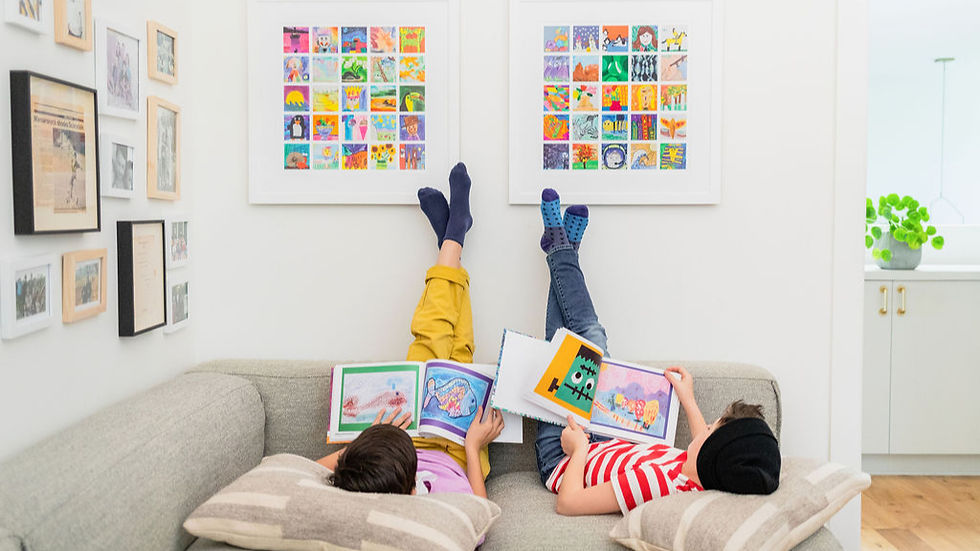The Art of the Scribble: Encouraging Creativity in Young Children
- Katie Brown

- Oct 3, 2024
- 3 min read
Updated: Sep 10, 2025
Creativity is a cornerstone of childhood development, and one of the simplest yet most impactful ways to nurture it is through scribbling. While scribbles might seem like random marks to adults, they represent the beginning of a child's journey into the world of art and self-expression. Encouraging this form of creativity in young children can have lasting benefits, both in their artistic development and their overall cognitive growth.

The Importance of Scribbling
Scribbling is often a child's first attempt at drawing. It typically starts around 12 to 18 months and continues as they grow. These early marks are more than just random lines; they are a child's way of exploring and making sense of the world around them. Scribbling helps develop fine motor skills, hand-eye coordination, and control over hand movements. It's also an early form of communication and self-expression.
When children scribble, they are not just making marks on paper; they are engaging in a process that involves imagination, decision-making, and problem-solving. Each line and curve is a step towards more complex forms of drawing and writing. By encouraging scribbling, parents and educators can support the development of these crucial skills.
Creating a Scribble-Friendly Environment
To encourage scribbling, it's important to create an environment where children feel free to explore and experiment with different materials and techniques. Here are some tips for setting up a scribble-friendly space:
Provide a Variety of Materials: Offer crayons, markers, pencils, and chalk in different colors. Having a variety of tools can inspire creativity and experimentation.
Accessible Surfaces: Ensure that paper, coloring books, and other drawing surfaces are easily accessible. Consider using easels, chalkboards, or large sheets of paper taped to the floor or walls.
Encourage Exploration: Allow children to explore different textures and surfaces, such as drawing on cardboard, fabric, or even sidewalks with chalk.
No Pressure: Avoid directing or critiquing their work. Instead, celebrate their efforts and creations, no matter how abstract they may seem.
The Role of Adults in Encouraging Scribbling
Adults play a crucial role in nurturing a child's creative development. Here are some ways to encourage scribbling and support their artistic growth:
Join the Fun: Sit down with your child and scribble together. This not only shows that you value their activity but also provides an opportunity for bonding.
Ask Open-Ended Questions: Instead of asking what a drawing is, ask them to tell you about it. This encourages them to think about their work and express their thoughts.
Display Their Art: Show pride in their creations by displaying them in your home. This can boost their confidence and encourage them to continue exploring their creativity.
Introduce New Techniques: Gently introduce new techniques and materials as they grow older, such as using watercolors, stamping, or collage.

The Benefits of Encouraging Scribbling
Encouraging scribbling has numerous benefits for young children. It helps develop fine motor skills, which are essential for tasks like writing and buttoning clothes. Scribbling also enhances hand-eye coordination and spatial awareness. Additionally, it provides a foundation for literacy skills, as children begin to understand that marks on a page can represent objects, ideas, and stories.
Moreover, scribbling is a form of emotional expression. It allows children to convey their feelings and experiences in a non-verbal way. This can be especially important for children who may not yet have the words to express themselves fully.
Conclusion
The art of scribbling is a vital part of early childhood development. By providing a supportive environment and encouraging their creative efforts, we can help children develop essential skills and foster a lifelong love of art and self-expression. So, grab some crayons, sit down with your child, and embrace the wonderful world of scribbles.



